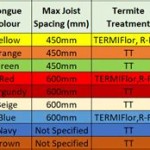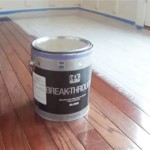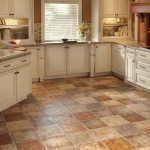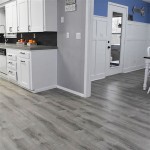Is Vinyl Flooring Good For Stairs And Landings? An In-depth Examination
The selection of appropriate flooring for stairs and landings is a crucial aspect of interior design and home improvement. These areas experience high foot traffic and are subject to significant wear and tear. The flooring material chosen must therefore be durable, safe, aesthetically pleasing, and easy to maintain. Vinyl flooring has emerged as a popular option for many homeowners due to its versatility and cost-effectiveness, but its suitability for stairs and landings requires careful consideration. This article provides a comprehensive analysis of vinyl flooring's advantages and disadvantages in this specific application, covering key aspects such as durability, safety, installation, aesthetics, and cost.
Understanding the characteristics of vinyl flooring is essential before evaluating its suitability for stairs and landings. Vinyl flooring is a synthetic material composed primarily of polyvinyl chloride (PVC). It is available in different formats, including sheet vinyl, vinyl tiles, and luxury vinyl planks (LVP). Each format offers varying levels of thickness, wear layer protection, and installation methods. The wear layer, typically measured in mils (thousandths of an inch), is a crucial determinant of the flooring's resistance to scratches, stains, and scuffs. A thicker wear layer generally indicates greater durability and longevity. Furthermore, vinyl flooring can be manufactured with various textures and patterns, mimicking natural materials like wood or stone. This aesthetic versatility contributes to its widespread appeal.
The installation methods for vinyl flooring also differ depending on the format. Sheet vinyl typically requires professional installation to ensure a seamless and watertight surface. Vinyl tiles can be installed using a peel-and-stick adhesive or a glue-down method. LVP often utilizes a click-lock system, simplifying the installation process and making it a more viable option for DIY projects. These variations in installation complexity and cost need to be taken into account when assessing vinyl flooring as a solution for stairs and landings.
Durability and Wear Resistance
One of the primary considerations when selecting flooring for stairs and landings is durability. These areas are subject to constant foot traffic, especially in multi-story homes. The flooring material must be able to withstand daily wear and tear without showing signs of damage or deterioration. Vinyl flooring, particularly LVP with a thick wear layer, offers significant advantages in this regard.
The wear layer acts as a protective barrier against scratches, scuffs, and stains. Foot traffic, pets, and even dropped objects can cause significant damage to flooring surfaces. A thicker wear layer provides greater resistance to these types of damage, extending the lifespan of the flooring and maintaining its aesthetic appeal. For stairs and landings, it is generally recommended to choose vinyl flooring with a wear layer of at least 20 mils to ensure adequate protection against heavy traffic. Commercial-grade vinyl flooring, which typically features even thicker wear layers, is often used in high-traffic residential areas.
However, the durability of vinyl flooring can also be affected by the quality of the manufacturing process. Cheaper vinyl flooring products may have thinner wear layers or be made from lower-quality materials, making them more susceptible to damage. It is therefore important to research different brands and products carefully, paying attention to customer reviews and technical specifications.
Furthermore, the subfloor preparation plays a crucial role in the overall durability of vinyl flooring. A smooth, level, and clean subfloor is essential for proper adhesion and prevents premature wear and tear. Any imperfections in the subfloor can telegraph through the vinyl flooring, leading to uneven wear and potential damage. Therefore, proper subfloor preparation is a critical step in ensuring the long-term durability of vinyl flooring on stairs and landings.
Safety Considerations: Slip Resistance and Stability
Safety is a paramount concern when choosing flooring for stairs. Stairs are inherently hazardous areas, and a slippery or unstable flooring surface can significantly increase the risk of accidents. Vinyl flooring can offer good slip resistance if the appropriate type and finish are selected. The texture of the vinyl flooring plays a significant role in determining its slip resistance. Embossed or textured vinyl flooring provides a better grip than smooth surfaces, reducing the likelihood of slips and falls.
The American Society for Testing and Materials (ASTM) provides standards for measuring the slip resistance of flooring materials. These standards can be used to evaluate the safety of different vinyl flooring products. It is advisable to choose vinyl flooring that meets or exceeds these standards for use on stairs. In addition to the texture of the flooring, applying anti-slip treads or strips to the stairs can further enhance safety. These treads provide additional grip and can be particularly beneficial for individuals with mobility issues or for households with young children or elderly residents.
The stability of vinyl flooring is also important for safety on stairs. The flooring material should be securely attached to the subfloor to prevent it from shifting or lifting, which can create tripping hazards. Proper installation is crucial for ensuring the stability of vinyl flooring. Using the appropriate adhesive or click-lock system, as recommended by the manufacturer, is essential for a secure installation. Regularly inspecting the flooring for any signs of loosening or damage and addressing any issues promptly can help to maintain safety.
Moreover, the use of stair nosings is highly recommended for vinyl flooring on stairs. Stair nosings are rounded or shaped edges that provide a smooth transition between the stair tread and the riser. They not only enhance the appearance of the stairs but also provide added grip and protect the edges of the vinyl flooring from wear and tear. Choosing appropriate stair nosings that are compatible with the vinyl flooring is crucial for both safety and aesthetics.
Installation and Maintenance
The ease of installation and maintenance are important factors to consider when choosing flooring for stairs and landings. Vinyl flooring offers relatively straightforward installation compared to some other flooring options, such as hardwood or tile. However, the level of difficulty can vary depending on the type of vinyl flooring and the complexity of the staircase.
Vinyl tiles and LVP with a click-lock system are often considered DIY-friendly options for stairs. These products can be easily cut to size and installed without the need for specialized tools or adhesives. However, precise measurements and careful attention to detail are essential for achieving a professional-looking result. Uneven cuts or misaligned planks can detract from the overall appearance and potentially create tripping hazards. Sheet vinyl, on the other hand, typically requires professional installation due to its size and the need for a seamless, watertight finish. Professional installers have the expertise and equipment to ensure a proper installation, minimizing the risk of bubbles or wrinkles.
Maintaining vinyl flooring on stairs and landings is relatively simple. Regular sweeping or vacuuming can remove dirt and debris, preventing scratches and scuffs. Damp mopping with a mild detergent can be used to clean the flooring and remove stains. It is important to avoid using harsh chemicals or abrasive cleaners, as they can damage the finish of the vinyl flooring. Protecting the flooring from direct sunlight can also help to prevent fading or discoloration over time. Using mats or rugs at the top and bottom of the stairs can further protect the flooring from wear and tear and reduce the amount of dirt tracked onto the surface.
Furthermore, addressing any damage promptly can help to prolong the lifespan of the vinyl flooring. Small scratches or scuffs can often be repaired with a vinyl repair kit. Damaged planks or tiles can be replaced individually, provided that replacement materials are available. Proper maintenance and timely repairs can help to keep vinyl flooring on stairs and landings looking its best for many years.
In conclusion, vinyl flooring can be a suitable option for stairs and landings, provided that careful consideration is given to the type of vinyl flooring selected, the quality of the installation, and ongoing maintenance. Its durability, slip resistance (when chosen appropriately), and relatively easy maintenance make it a practical choice for these high-traffic areas. However, thorough research and adherence to safety guidelines are essential to ensure a safe and aesthetically pleasing outcome.

How To Install Vinyl Plank Flooring On Stairs In 6 Steps

Pros And Cons Of Installing Vinyl Flooring On Stairs Lx Hausys

Pros And Cons Of Installing Vinyl Flooring On Stairs Lx Hausys

Pros And Cons Of Installing Vinyl Flooring On Stairs

Luxury Vinyl Tile Seamless Upstairs And Downstairs Solution

Steps To Install Lvp On Stairs Flooring Insights

Us Vinyl Floor Bending Custom Bent Luxury Plank Stair Treads Nosings

Creating Custom Bent Luxury Vinyl Steps Us Floor Bending

How To Install Vinyl Plank Flooring On Stairs Builddirect

Luxury Vinyl Tile Seamless Upstairs And Downstairs Solution
See Also







